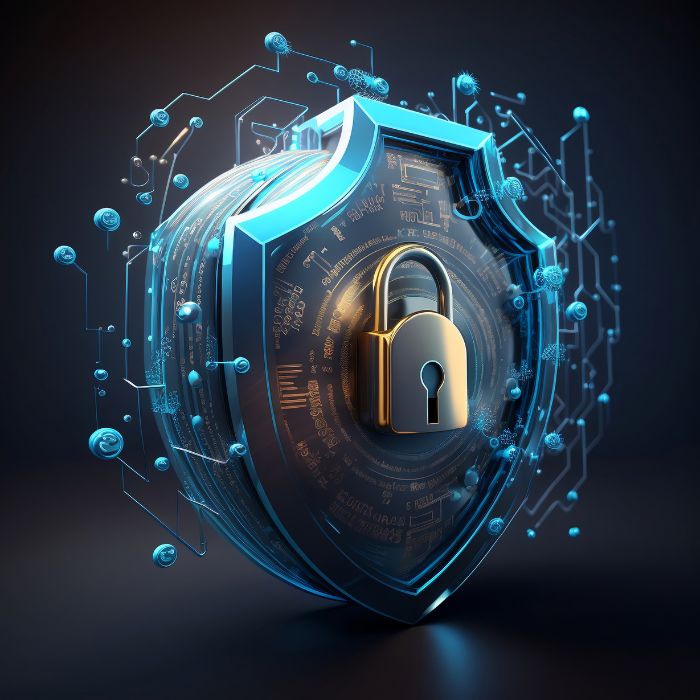Introduction
In our increasingly connected world, cybersecurity is of paramount importance. With the progress of technology, cybercriminals continually adapt their tactics to exploit new vulnerabilities. Native cybersecurity, which refers to the protection of the inherent security of operating systems, applications, and devices, has become a crucial aspect of safeguarding our digital lives. This article delves into the concept of improved native cybersecurity, its significance, challenges, strategies, and future trends.
Understanding Native Cybersecurity
Native cybersecurity revolves around securing the foundation of our digital infrastructure. It focuses on bolstering the inherent security features of operating systems, software applications, and hardware devices. By enhancing these built-in security measures, we can better protect against potential threats and vulnerabilities.
Importance of Improved Native Cybersecurity
- Protecting Critical Infrastructure
Critical infrastructure, such as power grids, financial systems, and healthcare networks, is highly dependent on digital technology. Any breach in these systems can have catastrophic consequences. Improved native cybersecurity ensures the robust protection of these vital components, preventing potential cyber-attacks and disruptions. - Safeguarding Personal Data
With the proliferation of online services, personal data has become increasingly vulnerable to cyber threats. Hackers often target sensitive information for identity theft, financial fraud, or other malicious purposes. Strengthening native cybersecurity mechanisms ensures that our personal data remains secure and out of the hands of cybercriminals.
Challenges in Native Cybersecurity
Increasing Cyber Attacks
The digital landscape has witnessed an alarming increase in cyber attacks in recent years. Hackers continuously evolve their tactics, making it challenging for traditional security measures to keep up. Improved native cybersecurity is necessary to combat these sophisticated attacks effectively.Advanced Persistent Threats (APTs)
Advanced Persistent Threats (APTs) are stealthy and continuous cyber attacks, often sponsored by well-funded organizations or nation-states. These threats can persist undetected for extended periods, wreaking havoc on organizations and individuals. Enhanced native cybersecurity helps in detecting and mitigating APTs effectively.Insider Threats
Not all threats come from external actors. Both intentional and unintentional insider threats present substantial risks to organizations. Strengthening native cybersecurity helps in identifying and addressing potential insider threats, minimizing the damage caused by internal vulnerabilities.
Strategies for Improved Native Cybersecurity
- Multi-Factor Authentication (MFA)
Implementing Multi-Factor Authentication (MFA) adds an extra layer of security beyond just passwords. It requires users to provide multiple forms of identification, such as a fingerprint or a one-time code sent to their mobile device. Multi-Factor Authentication (MFA) plays a vital role in substantially reducing the risk of unauthorized access. - Regular Security Updates
Software vulnerabilities are often discovered and exploited by cybercriminals. Regular security updates for operating systems and applications are crucial in patching these vulnerabilities and keeping our devices secure. - Encryption and Data Protection
Encryption is an essential aspect of native cybersecurity. It ensures that intercepted data remains indecipherable to unauthorized individuals. By using strong encryption methods, sensitive information is safeguarded from potential breaches. - Employee Training and Awareness
Humans are often the weakest link in cybersecurity. Providing comprehensive training and raising awareness among employees about potential threats and best practices can significantly reduce the likelihood of successful cyber attacks.
Leveraging Artificial Intelligence in Native Cybersecurity
Artificial Intelligence (AI) plays a pivotal role in enhancing native cybersecurity. AI-powered systems can analyze vast amounts of data to detect anomalies, identify potential threats, and respond rapidly to emerging cyber-attacks. By harnessing the capabilities of AI, organizations can stay one step ahead of cybercriminals.
The Role of Cloud Security in Native Cybersecurity
With the rise of cloud computing, securing data and applications in the cloud is vital. Cloud security measures complement native cybersecurity by ensuring that data stored in the cloud remains protected from unauthorized access and cyber threats.
Future Trends in Native Cybersecurity
- Quantum Cryptography
As quantum computing becomes a reality, traditional encryption methods may become vulnerable. Quantum cryptography, based on the principles of quantum mechanics, offers a new level of security that is virtually unbreakable. Embracing quantum cryptography will be crucial for future-proofing native cybersecurity. - Zero Trust Architecture
Zero Trust Architecture is a security concept that assumes no inherent trust between users and the network. It demands continuous verification and authorization of all users and devices, regardless of their location. Adopting this approach enhances security in native cybersecurity environments.
Leveraging Cyber Threat Intelligence
In the fight against cyber threats, organizations can benefit from cyber threat intelligence (CTI). CTI involves gathering, analyzing, and understanding information about potential threats and adversaries. By utilizing CTI, organizations can proactively identify emerging threats and vulnerabilities, allowing them to take preventive measures before an attack occurs. This intelligence-driven approach enhances native cybersecurity by providing valuable insights into the tactics and techniques employed by cybercriminals.
The Role of Governments and Regulations
Governments worldwide are recognizing the critical importance of cybersecurity. Many countries have introduced regulations and frameworks to enforce better security practices across industries. Compliance with these regulations not only protects critical infrastructure but also ensures the privacy and security of citizens’ data. By adhering to cybersecurity standards set by regulatory bodies, organizations can further strengthen their native cybersecurity posture.
User Education and Cyber Hygiene
An educated and cyber-aware user base is a crucial line of defense against cyber threats. Educating users about potential risks, common attack vectors, and safe online practices is essential to improve native cybersecurity. Organizations should conduct regular training sessions and awareness programs to empower their employees to identify and report potential security incidents. Encouraging good cyber hygiene, such as using strong passwords, avoiding suspicious links, and keeping software up-to-date, goes a long way in preventing successful cyber attacks.
Collaboration and Information Sharing
Cybersecurity threats are not limited to a single organization or industry. Adversaries are quick to exploit any vulnerability they find. Therefore, collaboration and information sharing among organizations, industries, and even governments are crucial in the fight against cyber threats. Sharing threat intelligence and best practices can help others learn from previous incidents and take proactive measures to defend against similar attacks. Many countries and industries have established information-sharing platforms and forums to facilitate this collaborative approach.
The Rising Importance of Cyber Insurance
With the growing risk of cyber attacks, cyber insurance has emerged as a valuable safeguard for organizations. Cyber insurance policies provide coverage against financial losses resulting from cyber incidents. In the event of a cyber attack, organizations can recover their losses through insurance claims, allowing them to focus on recovering and rebuilding their operations. Cyber insurance encourages organizations to invest in robust native cybersecurity practices, knowing that they have an additional layer of protection.
Conclusion
Improved native cybersecurity is an indispensable component of protecting our digital world from the ever-evolving threats of cybercriminals. By strengthening the inherent security features of our systems, employing AI-powered technologies, and adapting to future trends, we can ensure a safer online environment for individuals and organizations alike.
FAQs (Frequently Asked Questions)
Native cybersecurity focuses on securing the inherent security features of operating systems, software applications, and devices to protect against cyber threats.
Multi-Factor Authentication requires users to provide multiple forms of identification, reducing the risk of unauthorized access.
Cloud security ensures that data stored in the cloud remains protected from cyber threats and unauthorized access.
Artificial Intelligence helps in analyzing data, detecting anomalies, and responding rapidly to emerging cyber threats.
Zero Trust Architecture demands continuous verification and authorization of all users and devices, enhancing security in native cybersecurity environments.
Cyber threat intelligence (CTI) involves gathering and analyzing information about potential cyber threats and adversaries to proactively defend against attacks.
Educating users about cyber risks and safe online practices help create a cyber-aware workforce, which is crucial in preventing successful cyber attacks.
Collaboration and information sharing among organizations and industries enable the exchange of threat intelligence and best practices, improving overall cybersecurity readiness.
Cyber insurance provides financial protection against losses resulting from cyber incidents, encouraging organizations to invest in robust cybersecurity practices.



